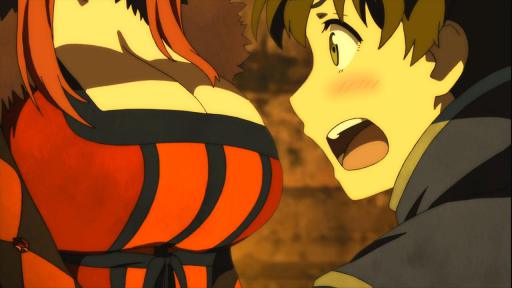
Anime is obsessed with breasts. Top-heavy female characters appear across anime stories, including stories aimed at girls. Female characters obsess over their bust size, fondling larger friends or feeling self-conscious about their own small bust. It’s easy to dismiss this as simply “boobs sell” and anime is made for horny teen guys. These are partial reasons. Anime, along with all forms of fiction, seek to entertain and teach through exaggerating and exploring a simplified version of reality. No matter how complex a fictional world can be, it’s still simpler than reality. Fiction holds a mirror to expose a view of that complex reality. So, anime’s obsession with big boobs points to reality’s relationship with this part of the female body. Beyond anime, Western media fetishizes and commodifies breasts. Boobs sell everything from cars to carrots. Society has separated the attractiveness and shape of breasts from their function–to feed babies (Swami, 2020). Because people internalize society’s values of beauty, men come to believe bigger is better. Breasts then play an important role in shaping women’s anxiety about their bodies and appearance. As Swami (2020) states:
For example, qualitative research with women from the United States has implicated exposure to large breasts depicted in mass media as an important influence on breast size dissatisfaction, despite participants’ stated dislike of those mediated images.
Anime’s large busts perpetuate these trends and point to the problems of those trends, if indirectly. Decoupling breasts from their purpose–to foster new life–, as media has done, breaks the association that has dominated human history (Domshy, 2003). In some ways, as I will discuss, anime links breasts back to their purpose.
Breast Anatomy
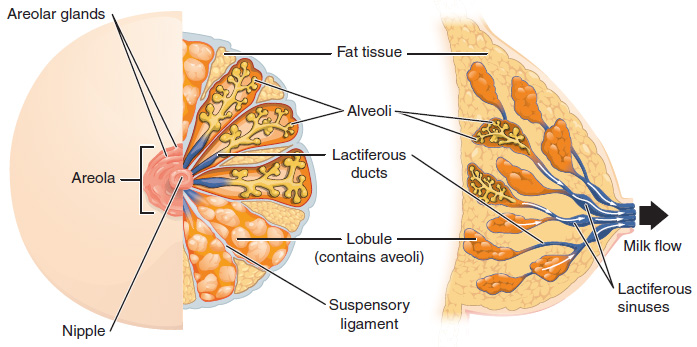
Humans are unique as mammals go. Few mammals have their mammary glands remain prominent outside of pregnancy and nursing. Human breasts contain dense and nondense tissue, the mammary glands that produce milk. the ducts that deliver the milk, and all the muscles, veins, and ligaments that support the structure. Dense tissue consists of glands, ducts, and so on. Nondense tissues are fat cells. Studies found breast size, particularly large dense tissue areas, associate with increases in breast cancer. More nondense tissue associates with a decrease in cancer risk. The age women have children influences this risk as well (Lim, 2018):
In a subset of 21,073 women with children, older age at first birth and never breastfed were associated with smaller bust line, smaller total breast area, smaller total nondense area and bigger dense area.
In other words, older mothers can see a higher risk of breast cancer because they have more dense tissue, but having children leads to a general decreased risk in breast cancer.
Breasts come in a variety of shapes with one breast, usually the left, growing a bit larger than the other. Some are spherical. Others are more concave. Still others are conical with convex and concave variations. Around 20% of women have inverted nipples–nipples that don’t protrude outward. As for weight, the average American bra size is 36 C, and breasts of that size weight a bit less than 2 pounds each (Azodi, 2011).
Breast size and anatomy stands between 70-80% heredity with nutrition covering the variation. Japan offers a good example of this. Japanese women have smaller breasts than Caucasian women. Since the 1980s, however, Japanese women have been eating more fat. Lingerie maker Triumph International Japan regularly surveys Japanese women. A recent survey shows an increase in the number of customers who need a D-cup or larger over the decades (2019):
- 1980s: 4.5%
- 1990: 17.6%
- 2018: 53.1%
Genetics haven’t changed that much over these decades. Higher BMI (body mass index) links to larger breast sizes. As Triumph’s representative commented:
“There are two reasons for this,” explained Shuko Sakata, manager of brand marketing at Triumph. “The first is changes in the diet, such as increased meat consumption and westernization in general. The other is because we manufacturers have become better at teaching customers the correct way to select a brassiere. When putting on their bras, women tend to lean forward and by so doing gravity collects fleshy parts on the sides of their torso to fill up the cup. That alone can increase cup size by as much as two sizes.”
This points to how measuring breast size through cup measurements isn’t reliable. The anatomy of the breast, the nondense and dense tissue, isn’t reflected in cup size either. A “B” cup of a dense breast is different from a “B” cup of a largely nondense breast in terms of anatomy and cancer risk. And if you are a guy and ask any woman you will learn bra sizes vary based on brand, material, type, and style.
The onset of breast development varies. Some girls see breast development before her first menstruation. In a study, mothers’ pesticide exposure links to earlier breast development in their daughters. The daughters had higher androgen levels, which the study states may indirectly increase oestrogens (Wohlfahrt-Veje, 2011). Other girls see a delayed development, but girls in general see earlier development than in the past (Brix, 2018; Daniels, 2005). While genetics largely determine breast development, environment plays a role in time of development and other anatomical factors such as tissue density.
The Breast Appeal
But it’s not just girls with big boobs who struggle with unwanted ogling. “I’ve had friends comment that my smaller bra size is ‘surprising’ compared to the rest of my body,” shares Jordan H., 17. “I know it’s just a reflection of their insecurity… but it still hurts.” –Hammer (2021) Girls’ Life.
“Breast size really isn’t as big of a factor to guys as girls might assume–unless of course you’re a middle school boy, in which case you see huge boobs as the eighth wonder of the world.” –Khidekel (2005) Cosmo Girl.
Guys like boobs, in part, because boobs represent children and life. They represent the ancient role of women as the life-producer and sustainer. Scientists draw this conclusion because statues and cave drawings of large-breasted women date to the earliest periods of human history and find these artifacts across cultures (Chivers, 2012). Larry Young, a professor of psychiatry at Emory University, suggests men like breasts because stimulating a woman’s nipples releases oxytocin, the neurochemical responsible for strengthening affection. The chemical helps bond a woman to the man (Wolchover, 2012). Not all men and cultures, however, find large breasts attractive. Japanese culture has a distinct lack of interest in the chest until the modern era. When you look at Japanese woodblock prints, artists didn’t lavish attention on women’s chests. Other body parts were rendered in detail. Yoshihiko Shirakawa, an expert on woodblock prints states (Kozuka, 2013):
“It appears that men of the Edo period considered breast to be a tool for child rearing. They were not a sexualized part of the body. In shunga from the early Edo Period, men and women were depicted with largely similar chests. From the point of view of the artists, breasts really didn’t seem to matter.”
A few studies discovered male boob preference is influenced by cultural standards and by resource availability. Men who experience resource insecurity rate women with largest breasts as more attractive than men who have resource security. A man’s preference varies based on his perceived socio-economic status. The researchers theorize this is because breast size and shape signals age, sexual maturity, fertility, nulliparity, and access to resources. A larger woman was more likely to survive a famine in the ancient world than a thin woman (Swami, 2013). A man without resources would be drawn to a woman who signaled she had resources.
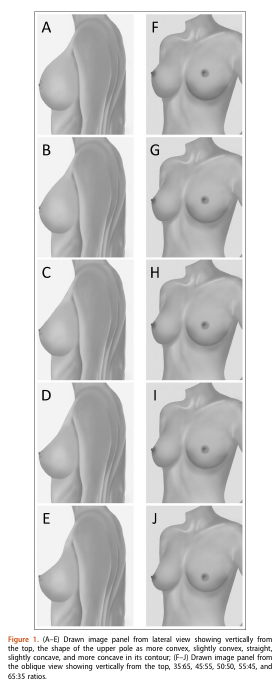
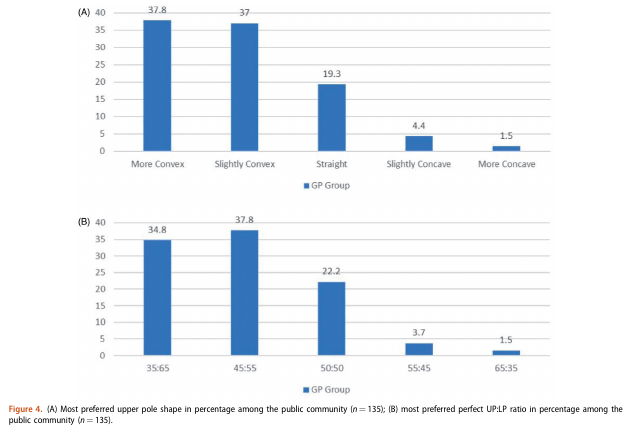
Figures are from Izzuddin Hamzan, Muhammad, et al (2022) Perception of the most perfect female breast shape among Malays, Chinese, and Indians community. Journal of Plastic Surgery and Hand Surgery. 56 (1) 30-37.
Breast appeal applies to women. Eye tracking studies suggest women look at breasts as much as straight men do (Swami, 2013). Women’s breast preferences contributes to a society’s preferences, along with being influenced by society’s preferences. Beauty standards shift over time. Consider how flat chests were in vogue during the US’s 1920s, perhaps in part by the increase in perceived resources at that time. In a study of Malay, Chinese, and Indian breast perceptions, women preferred convex breast shapes (A and B in the research’s drawings of ideal shapes above. The bar graph below correspond with the drawings.). The results align with similar worldwide studies (Izzuddin Hamzan, 2022). The study doesn’t tease out if the selection is because women believe men prefer those shapes or for other reasons. Media has long played a role in this (Daniels, 2005):
In our culture, some girls never see normal breasts or see a mom breastfeed. Instead, they see and learn about breasts from magazines, TV, music videos, and the internet.
The Price of Big Boobs
The lack of breast size and shape diversity in media contributes to the price women pay for having and for not having breasts society deems desirable. In a study of 18,541 women sampled from 40 nations, the majority of women, 70.7%, felt dissatisfied with their breast size (Swami, 2020):
- 47.5% wanted larger breasts
- 23.2% wanted smaller breasts
- 29.3% were satisfied with current size
Society rewards women who strive and attain its body ideals and punishes those who do not. As Swami (2020) writes in the study:
In addition, greater absolute breast size dissatisfaction was associated with greater weight and appearance dissatisfaction, poorer breast awareness, and poorer psychological well-being across nations.
For example, qualitative research with women from the United States has implicated exposure to large breasts depicted in mass media as an important influence on breast size dissatisfaction, despite participants’ stated dislike of those mediated images.
Seeing large, unrealistic boobs hurts women’s body image. To go briefly off topic, this lesson should also caution men with the trend in media of ultra muscular unrealistic bodies. Men already show some signals of suffering from the same body image problems women struggle with. People need to be exposed to real bodies and their variety. As Crossley-Baxter (2020) wrote of her experiences in Japanese public baths:
By offering a space for truly inclusive nudity, public baths are a unique chance to familiarise children with the natural form in a world where air-brushed, provocatively posed bodies are all too common. “Young girls learn early in life that not all women look like supermodels, and they don’t need to,” said my friend Tomomi Abiko, a Japanese native who has enjoyed onsen for as long as she can remember.
Large-breasted women deal with people staring at them and the insecurity that can bring (Hammer, 2021). Large breasts come with physical issues too. Not only do they increase the risk of breast cancer, but large busts can cause mobility problems, decreasing exercise and sports participation (Lim 2018). Big boobs strain the neck and shoulders and contribute to headaches. Large breasts seem to increase the risk of a woman developing degenerative spinal disorders, but more study needs to be done before researchers can draw a conclusion (Schinkel-Ivy, 2016). Women pay a price for having, and for not having, large breasts. And remember, most determinants of breast size are hereditary.
Anime’s Largest Breasts and Character Shorthand
Anime contributes to the problem of large breasts while also being a result of society’s large-breast pressure. Feedback loops perpetuate themselves. Anime still offers some breast-size diversity. Although, it does like to leverage size jokes: poking fun at small-chested characters and having girl breast fondling scenes. I have to note these bathing scenes provide examples of hadaka no tsukiai, a platonic openness and honesty that happens when clothes and social standing are pulled off (Crossley-Baxter, 2020). Anime’s largest breast sizes would most certainly cause spine degeneration. They become grotesque to my sensibilities. I’ve seen many anime fans list and rank breasts. With these and other media-boobs, it’s little surprise similar shapes and sizes were deemed “perfect” and “ideal” by women across the world.
Breast sizes offer viewers a immediate first impression of a character’s type. While writers like to subvert these first impressions, breast sizes work like hair color. Red hair, for example, denotes a fiery personality. Anime has limited time to establish characters, so every means are used, including bust size. Generally, the larger the bust the more motherly the character. The smaller the bust the more combative the character. Many tsundere females are A cups. Large breasts associate with confidence, assertiveness, openness, and capability. Small breasts associate with quietude, insecurity, reservation, innocence, and strength–physical and emotional. Large breasts link to “air headedness” while small breasts link with intelligence. The size of the breasts correlate to the amount of these attributes the character has with average cup size characters exhibiting the normal level of these traits. Of course, stories like to play with these associations. Coming-of-age stories sometimes use these suggestions to illustrate character development. A small-breasted, insecure girl grows into a not-so-small breasted confident woman. I’ve yet to see a breast reduction as a large-breasted character changes toward small-breasted character traits. Bust expansion happens as female characters mature.
When fans speak of anime breasts specifically, you will see them use the word oppai. The word is a transliteration of the Japanese word for breasts. Most fans use the word in reference to oversized breasts.
Quetzalcoatl (Miss Kobayashi’s Dragon Maid)
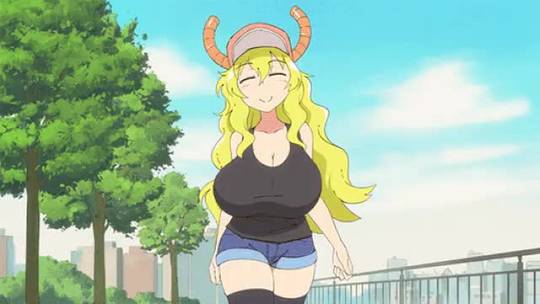
Quetzalcoatl comes from a yuri aimed at women. Not to say guys don’t enjoy the story too. But she shows how large boobs aren’t isolated to anime aimed at straight men. She’s an airhead but has motherly qualities to match her bosom.
Rangiku Matsumoto (Bleach)

Rangiku has the motherly qualities to match her bosom, particularly toward her captain Hitsugaya. She’s open about her insecurities and is confident. She uses her bust to mess with people.
Nami (One Piece)
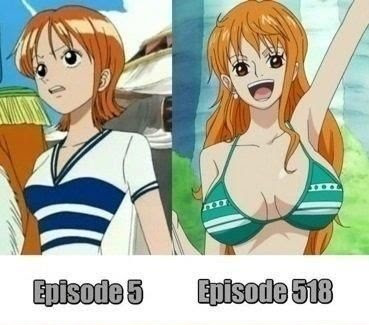
Nami provides an example of extreme bust growth. In some cases, design changes like this happen when a series is handed to a different studio. In Nami’s case, it’s a choice by One Piece‘s author.
Darkness (KonoSuba)
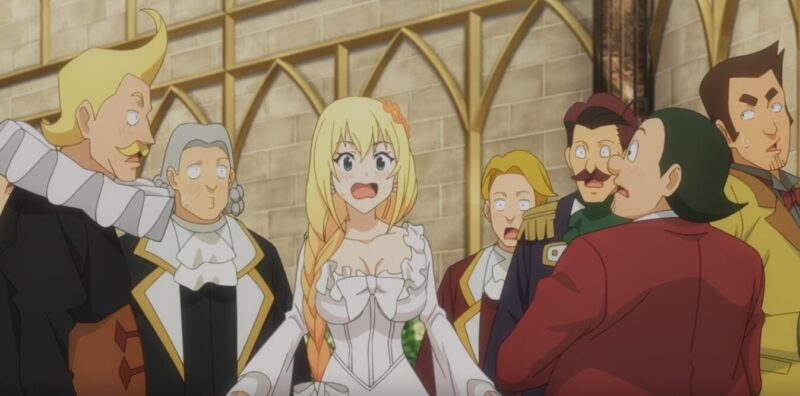
Darkness breaks the trope of large breasts make for a motherly character. She is open about her sexual preferences and effuses confidence.
Rukia (Bleach)
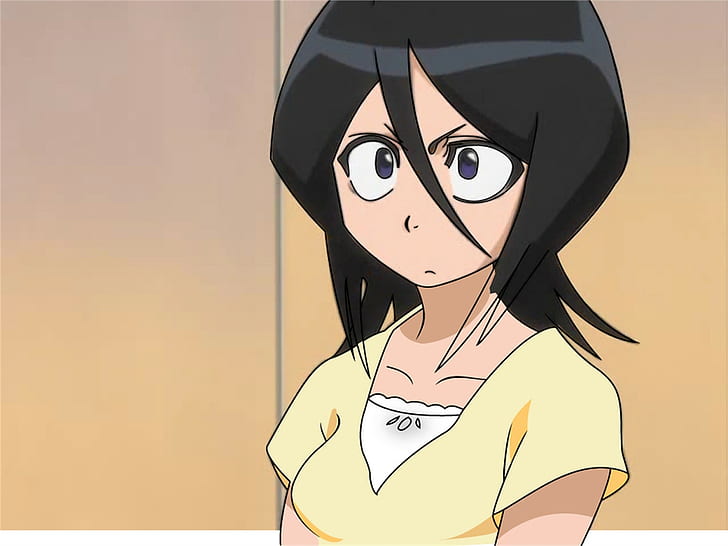
Rukia has small breasts. She’s capable and confident with a strong spirit, matching the typical small-breasted character template.
Embrace Diversity
Media needs to embrace the gamut of healthy human body types. Children and adults need more exposure to realistic bodies. I’ve always thought it odd that murders are acceptable in American media but any sort of nudity would immediately lead to a stiffer rating. It’s a hold over from the US’s Puritan roots. More exposure to natural breast sizes and shapes would help decrease the hold media has on us. It would help women and men develop better body images.
Anime isn’t at fault with this. Some stories do not help. But anime also recouples breasts to their purpose. Large breasts link to motherly character traits (again, not always). This reestablishes the ancient link between breasts and their life-giving purpose. Female anime characters act as a “call to adventure” for many male characters, crashing into his life and forcing a choice that leads to a new life. In this way, she acts as a life-giver. This trope applies to female protagonists in yuri stories too.
Not all men and women find larger better. A significant number of men prefer smaller busts or have no preference. Ideas of beauty change over time. Eventually, small breasts will be fashionable and deemed the ideal of beauty again. Media determines a good percentage of this preference. For better or worse, breasts will remain an important signal of resources, health, fertility, beauty, and character in real life and in fiction. Because of this, anime will, for as long as it exists, remain obsessed with boobs.
References
Azodi, Mina (2011) Fascinating Breast Facts. Cosmopolitan. 250 (7) 138-141.
Brix, Nis et al (2018) Timing of puberty in boys and girls: A population-based study. Paediatr Perinat Epidemiol. 2019;33:70–78.
Chivers, T (2012) Is it really ‘the West’ that’s breast-obsessed? Or just men? Telegraph. http://blogs.telegraph.co.uk/news/tomchiversscience/100129578/is-it-really-the-west-thats-breast-obsessed-or-just-men/.
Crossley-Baxter, Lily (2020) Japan’s naked art of body positivity. BBC. https://www.bbc.com/travel/article/20200202-japans-naked-art-of-body-positivity.
Daniels, Ellie (2005) Breasts and All the Rest. New Moon. November/December.
Domshy, H. (2003) (Re) Imaging the Breast: An Analysis of a Cultural Obsession. Fellowship. 34 (3).
Hammer, Katherine (2021) It’s boob season. Girls’ Life. 27 (6) 74-84.
Izzuddin Hamzan, Muhammad, et al (2022) Perception of the most perfect female breast shape among Malays, Chinese, and Indians community. Journal of Plastic Surgery and Hand Surgery. 56 (1) 30-37.
Japanese women’s breast size boasts 40 years of continued growth. (2019) Japan Today. https://japantoday.com/category/features/kuchikomi/japanese-women’s-breast-size-boasts-40-years-of-continued-growth.
Khidekel, Marina (2005) bust-ed! Cosmo Girl. 7 (3) 82.
Kozuka, J. (2013) How Times Change: Japanese Men in Edo Period Not Interested in Breasts. RocketNews24. http://en.rocketnews24.com/2013/04/18/how-times-change-japanese-men-in-edo-period-not-interested-in-breasts-nsfw/.
Lim, LiYan, et al (2018) Determinants of breast size in Asian women. Nature Scientific Reports. 8 (1201). 10.1038/s41598-018-19437-4.
Schinkel-Ivy, Alison and Janessa D.M. Drake (2016) Breast size impacts spine motion and postural muscle activation. Journal of Back and Musculoskeletal Rehabilitation 29 741–748.
Swami V, Tovée MJ (2013) Resource Security Impacts Men’s Female Breast Size Preferences. PLoS ONE 8(3): e57623. doi:10.1371/journal.pone.0057623.
Swami, Viren, et al. (2020) The Breast Size Satisfaction Survey (BSSS): Breast size dissatisfaction and its antecedents and outcomes in women from 40 nations. Body Image 32. 199-217. https://doi.org/10.1016/j.bodyim.2020.01.006.
Wohlfahrt-Veje, C, et al (2011) Early breast development in girls after prenatal exposure to non-persistent pesticides. International Journal of Andrology. 35. 273-282.
Wolchover, N (2012) New Theory on Why Men Love Breasts. Live Science. http://www.livescience.com/23500-why-men-love-breasts.html.
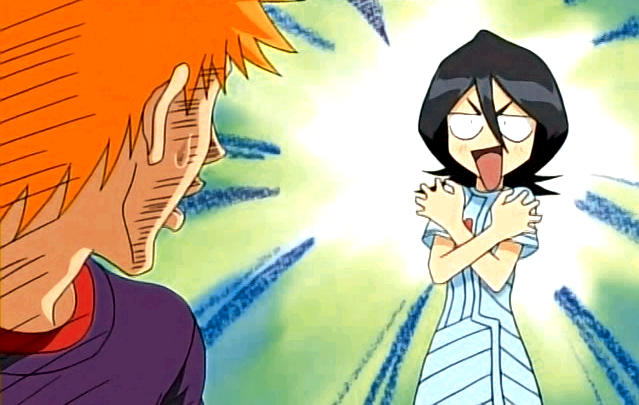
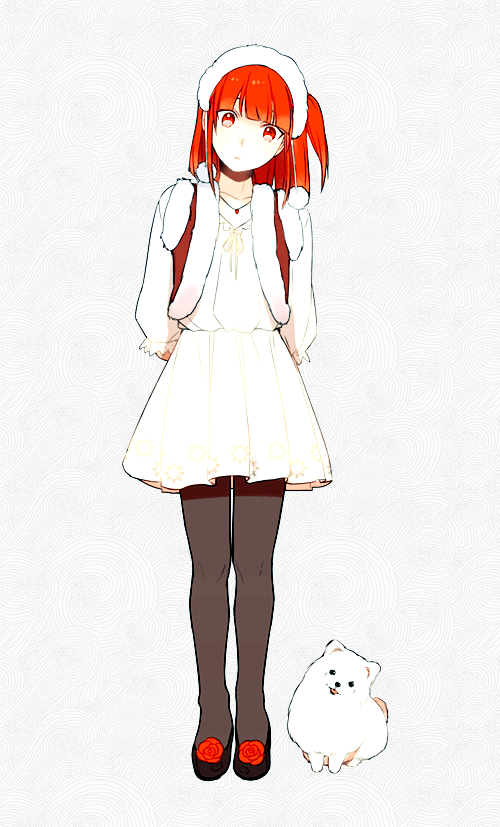

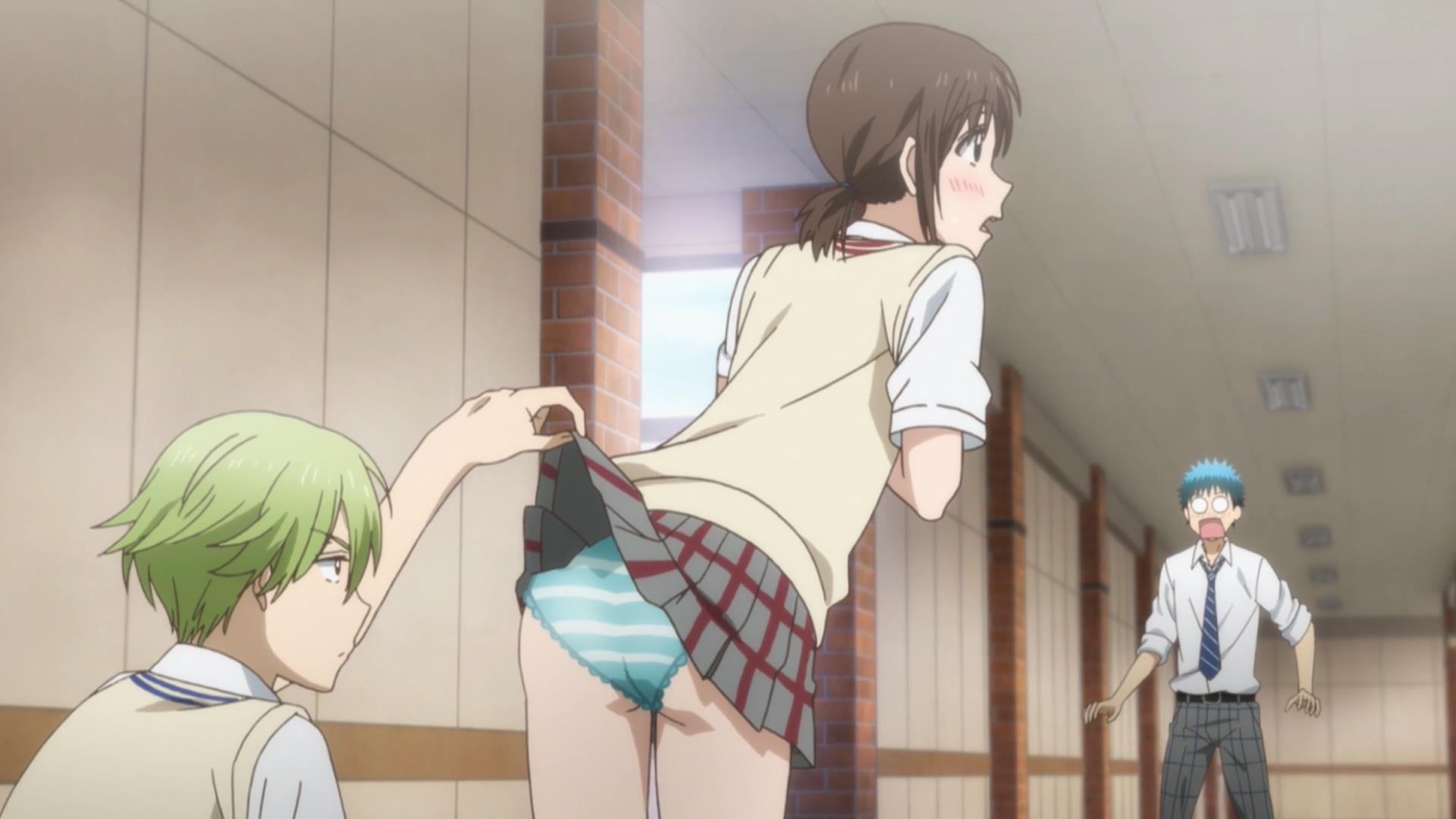
Nice one. I agree w this post in many ways. I think liking on huge (might be a burden) /big/medium/small is n’t the issue, but more on the intention of the man and does the girl like to be looked (be considerate 🤩). I am a straight male, personally like big but not too big, because I would worry my partner suffering from adverse effects. I do think both (small/big) have their own benefits, which I’m not gonna deep in 🤣. Big boobs doesn’t necessarily means having back pain, if a lady has gd posture, strong back (could be strengthened) and not-too large. Big or small, isn’t a big deal, more important is how the lady gonna look at it at a optismistic attitude, if she is happy about herself, everything is fine. Speaking of wanting a partner, kindness and many more characteristics are a whole lot more precious! But man can have their preferences, same as I would totally respect a black woman prefer a man of her same race over me in a non-racial-discriminate way, I would bless them tgh happily. I have religion, greatly and positively affecting me. My religion helps me stop porn and other types of 邪淫 (evil horniness). I avoid looking at ladies, not shy but respectfully and try to see bigger breast in a non-sexualied way, which sounds hard but is definitely possible. Therefore, if a man loves smaller breast, doesn’t mean he is any more noble. The main point is to use one’s will to resist viewing a ladies body in a horny way.
One the other hand, I am really glad u linked a bit of male unrealistic body. Gonna introduce a bit of my background, I love anime and super heros have inspired me, like the body of Machio, Puri Puri Prisoner (OPM), Olivia (Baki) has awesome huge physique, ofc w great practical use. I also love art and might create some characters w maybe strength diversity such as an arm-wrestler having unrealistic large arms bigger than their torso 🤣 for funny purposes. But I never stress over the muscular body to an unleastic extent. I am Asian, born and living in HK, studying science stuff. I would admit a larger body might have a bit more advantages in life (see sports have weight classes). Young ppl here including me also start lifting weights influenced by the west. HOWEVER, what’s the biggest difference is that we never feel insecure about ourselves, we get bigger for our own gds and goals. While in the US, teens or even insecure little kids are taking steroids, A VERY UNHEALTHY WAY. In some foreign places (to me, cause I am in Asia) there have been a pandemic of taking ‘stuff’. I am not a fan of the body positivty movement because obviously, it is out of control, woke shi* is too left. But so is the alpha males wanna be, I am not into being extreme conservative. Terms such as alpha male, victim weight are nonsense. In case u don’t know, victim weight is to shame guys under 160 / 200 pounds or whatever… ppl use this term, seriously skip biology classes. I love to bulk (add more muscles) but I ain’t doing that for girls or society requests. So long story short, Asians are no longer ‘short, small and can’t built muscles’ brainwashed by western right-wing media showing supremacy. But we definitely are more clear-minded, young ppl chase relistic healthy bodies for work, interest, goals and positive things (carrying heavy stuff for an elderly is awesome). I am glad we are rejecting unrealistic body images and anti-steroids. This is a contrast of east and west in 2024.
Lastly, I am glad to view more of ur articles. Thank you, have a nice day.
You’re right that not women with large breasts suffer from back pain. They are just more likely as a group to do so. You’re also right that preferences don’t make someone superior or inferior. Preferences are just a matter of taste.
Male body image problems are an emerging area of study. Some researchers believe male body image problems may even surpass female body image problems in frequency in the near future based on the current data. When it comes to male issues, from body image to rape, a lot of study still needs to be done. Some of the problems center around the definitions. The legal definition of rape, for instance, often precludes a female raping a male. Some of this is changing, which is opening up better datasets for research, but it will take some time before we get any good research. It’s interesting how much of the male body image problem, as you point out, comes from other men. From what I’ve read, in general, women don’t like “jacked, alpha chads.” This isn’t to say some don’t. As a population, women appear to like men who are strong but not muscle-bound. That’s more a male preference, which is curious and interesting. Steroids and hormone replacements are definitely dangerous, as you point out. Sadly, we can’t yet know what the long-term affects will be for teen boys who take such things so young.
Great thx for ur light-speed reply. One thing I learn over the years till (from secondary to my twenties) is that u should feel secure w ur body. Prince Ea had once speak out an amazying line “U workout because u love ur body, not because u hate it.” Another quote from “There is no shame in being weak. The shame is in staying weak.” from Black Clover. The body positivity movement is bad for ignorant on health, but one positive thing I would take they don’t shame the bodies. While ppl in fitness industries have the top 1% mindset but suffers from muscle dysmophia. HOLD ON! Let’s take the gds from both, be stronger like the later, but don’t feel insecure even when u are skinny fat at start like the former. So, not feeling insecure w one’s body, status or anything but able to not be lazy and work hard often don’t come tgh, that’s why such best mindset is rare. Another thing is that, ppl who shames others, not close frds joking on others but the serious ones, are often not the strongest ppl. The biggest dog, doesn’t need to bark the loudest. Simply, a lion don’t show off to an agressive tiny ant! If u don’t mind and have interest on this, watch at ur best comfort: https://www.youtube.com/watch?v=3ACUcxThArs&t=25s&ab_channel=Jubilee
The huge guy in yellow shirt (Eric Janicki) in above video, Ade Rai who is Indonesia bodybuilding father are all kind and humble guy. Which is kinda interesting phenomeon, THE MOST STRONGEST and/or BIGGEST and/or SUCCESSFUL ppl are often humble and have manners! Ppl who are real cocky are not really that top. Thing a bit deeper, because top ppl don’t need to show off unless sb challenge him/her. Self claimed alpha-males are just … I’m sorry, but that is cringe… no strong ppl does that.
So what gonna express in such a big bunch of words is I am glad I am clear-minded. I get big and stronger because I focus on health (soon a dietian working a hospial in HK) and also interested in arm-wrestling, where strength is beneficial. There are many positive things on being strong such as previously mentioned helping a old lady carrying stuff. NEVER workout because society wants u to be… , to get girls or whatever stupid reasons. Don’t brainwashed by the media. Real man be himself securely, not caring how other forces him to be, that is masculine!
Congrats on soon becoming a dietitian!
The body-positivity movement is a problem with how it endorses poor health and obesity. Positivity should mean accepting a variety of health body shapes. Not everyone has the genetics to be thin or a body-builder. But that doesn’t mean accepting lifestyles the create poor health. While there are elements of personal choice, society also has to share some of the cost through increased healthcare costs, accommodations, and other hidden costs. Navigating that boundary gets complicated.
You’re right that humility and “hiding your light,” to borrow a Bushido writer’s phrase, are critical for true strength. You nail the motivation aspect in your comment as well: don’t seek extrinsic motivation for fitness, seek intrinsic.